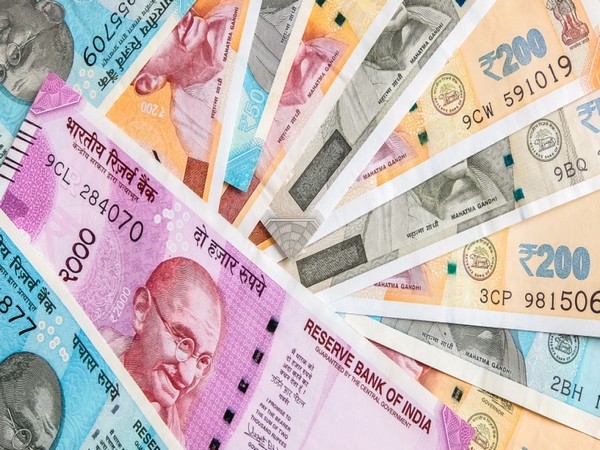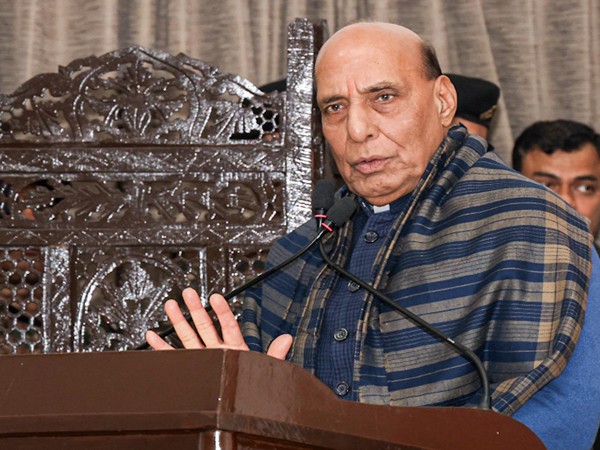
New Delhi [India] January 13 (ANI): Indian rupee touched an all-time low against US dollar. At the time of filing this report, the rupee was trading at 86.40 against US dollar.
Experts say the volatility trends show that the rupee will drop to 87 by March end.
“As per implied volatility trends, there are 80 per cent odds that the currency will drop to 87 between now and March-end, up from 27 per cent a month ago.” says Akshay Chinchalkar, Head of Research, Axis Securities.
Akshay adds that rising treasury yields and surge in crude prices has dampened the outlook for the Indian currency. The rupee has dropped for 16 straight weeks, which has never occurred in its history.
“India’s Rupee slumped beyond 86 this morning as a global dollar advance fueled by rising treasury yields and a surge in oil further dampened the outlook for the rupee. Offshore markets continue to bet against the rupee via options, where dollar-rupee out-of-the-money calls have been traded aggressively last week. The rupee has now dropped for 16 straight weeks, which has never occurred in its history,” he said.
Ajay Bagga Banking and market expert disagrees and says, rupee is facing pressure in line with other global currencies. In 2024, it has performed better than other emerging markets (EMs)
“The Rupee is facing pressure in line with other global currencies. In CY2024 the rupee was a relative outperformer versus other EMs. In 2025 we are seeing the continuation of US economic and bond yield exceptionalism which is leading to further strength in the US dollar and global currencies weakness.” said Ajay Bagga Banking and market expert
Indian rupee has been under pressure since last few months due to various domestic as well as international factors. These include India’s sluggish growth, outflows by foreign investors from Indian equities, and the strengthening of the dollar index after Donald Trump announced tariff plans, among others.
US dollar index rises to 109.98, highest since November 2022. Bagga said U.S. exceptionalism and EMs devaluing their currency to keep export competitiveness are reasons for rupee weakness.
“This US exceptionalism is the main reason for rupee weakness. Moreover, there is competitive devaluation as well, as to keep export competitiveness, EMs try to keep their currencies in a broad band with respect to export competitors, China for example used currency depreciation as a strategy in 2018 to counter Trump tariffs. India has to be a market follower in this scenario to keep its exports competitive” said Bagga
FPIs pulling out funds from the Indian markets is also putting pressure on rupee. (ANI)
Trump’s impact on Indian Rupee likely to be short-lived: SBI Report

New Delhi [India], January 14 (ANI): The “Trump Tantrum,” referring to the impact of Donald Trump‘s presidency on the Indian rupee, is likely to be a short-term phenomenon, says a report by State Bank of India (SBI).
The report highlighted that while the rupee may face initial volatility during the early days of his presidency, it is expected to stabilize soon after.
It said “Empirical evidence suggest that Trump Tantrum for INR will be a short-term phenomenon, and rupee should adjust post the initial shock of early days of Presidency”.
According to the report, historical data indicated that the Indian rupee has generally performed better under Republican administrations compared to Democratic ones.
“Contrary to market perceptions, the rupee appears more vulnerable under a non-Trump or Democratic regime,” the report stated.
Looking back at past U.S. presidencies, particularly since the Nixon era, the rupee has been relatively stable during Republican tenures.
While some volatility is expected in the near term, the current situation does not mirror the levels seen during the infamous “Taper Tantrum” of 2013. This has led analysts to believe that the rupee’s reaction to the Trump presidency will be temporary.
The report also noted that the rupee began to weaken in the second half of 2024 due to capital outflows. The strengthening of the U.S. dollar, triggered by Donald Trump‘s presidential victory in November, further contributed to the rupee’s decline.
Since November 2024, the rupee has depreciated by approximately 3 per cent against the U.S. dollar. Despite this, the rupee’s performance remains among the most stable when compared to other global currencies.
It said “Till date, rupee has depreciated by ~3 per cent against US dollar, still in lowest echelon when compared with other countries”.
The report further highlighted that during the first half of 2024, the domestic foreign exchange market remained steady, supported by capital inflows driven by the inclusion of Indian bonds in global bond indices. This helped cushion the rupee against greater volatility.
Overall, the report predicted that the rupee will adjust to the initial shock of the Trump presidency and stabilize in the coming months, easing concerns about prolonged instability. (ANI)
















